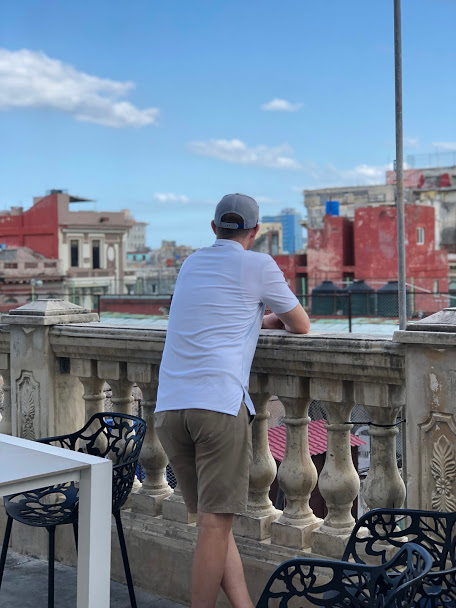I say first experience traveling to Havana, because I’m certain that I will be going back.
Growing up, I heard my Mom and her sisters talk about Cuba with a sense of nostalgia and longing. My Mom was born in Havana in 1959, the last of 7 children, and they fled the Castro regime in 1962. My mom doesn’t remember anything about her time spent in Cuba, and when my Mom and her sisters get together and the topic of Cuba comes up, they recount stories of their time growing up there back when Cuba was in its golden years, a Caribbean haven full of culture and life.
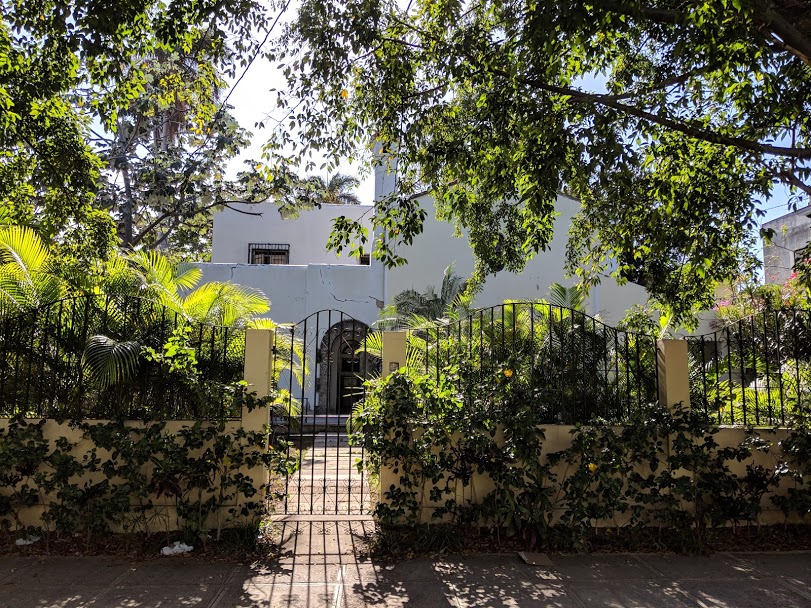
House my Mom grew up in
I had always wanted to travel to Cuba, we even almost went there for our honeymoon. Back in 2015 President Obama had loosened up some of the restrictions that Americans had regarding travel to Cuba, and we wanted to go “before it all changed”. Of course the rest of the world has been traveling there for the last several decades, the US being the only country restricting travel there to its citizens.

Classic cars in Old Havana
The opportunity to visit recently came up, and we both pretty much jumped on it without hesitation. Luckily as a travel advisor I have a handful of reputable and licensed companies that I work with to help plan travel to Cuba. I reached out to one of them and planned our trip along with two other couples, making sure it was compliant with US law while focusing our tourist dollars to help support the Cuban people (vs the Cuban government).

Here are some things you must try to do in Havana when you visit Cuba, especially if you want to learn from and support the Cuban locals. I’m also including additional info below on things to consider when going that includes how to exchange currency, how to secure a visa, and additional info that will be helpful for your next trip there.
What to do in Havana while supporting the locals:
Cuba is a communist society and in the recent years it has allowed some entrepreneurial reforms that have resulted in innovation amongst the Cuban people and privately-owned businesses have sprung up. You may notice heightened levels of customer service from these privately owned businesses as they are eager to please and of course be referred to future travelers.
Ride a Vintage car
Vintage cars are literally everywhere you look, from the moment you step foot outside of the airport. Some taxis/vintage cars are government owned, and others are privately owned. We made sure that the driver we had the entire time owned his own car, and he actually custom-made the blue van we rode in so that it fit up to 12 people. We got stopped everywhere we went with people asking if they could ride in our car!
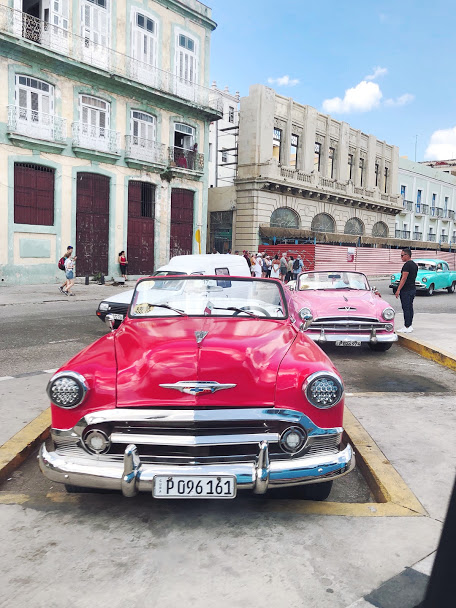
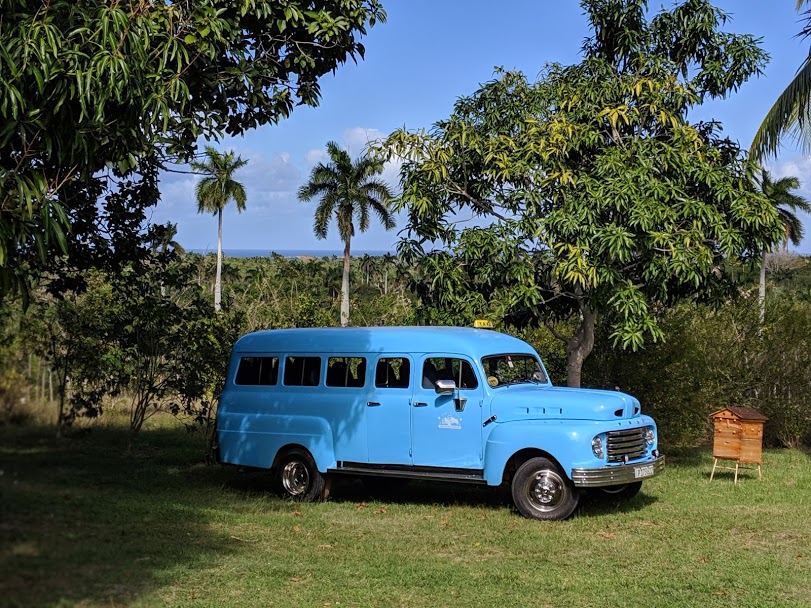
Private van we rode in the entire time we were in Havana
Try out a Paladar:
A Paladar is a privately-owned restaurant with permission from the Cuban government to operate. These restaurants tend to be way better in the quality of service and food that you get, because the owners are motivated to ensure their guests have a fantastic time and refer their business to other travelers. Some of the best ones are the following:
Atelier
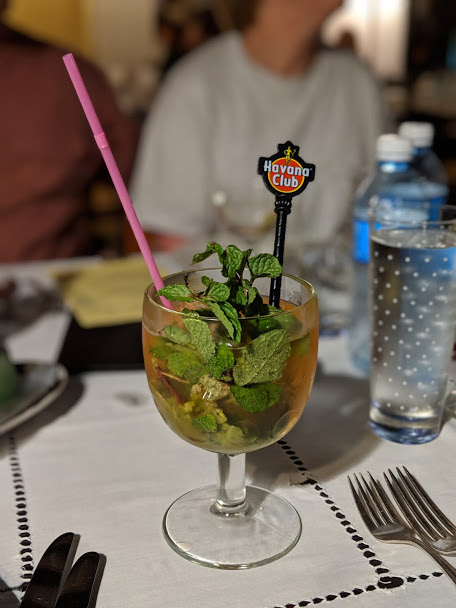
Special Mojito at Atelier
Amalfi
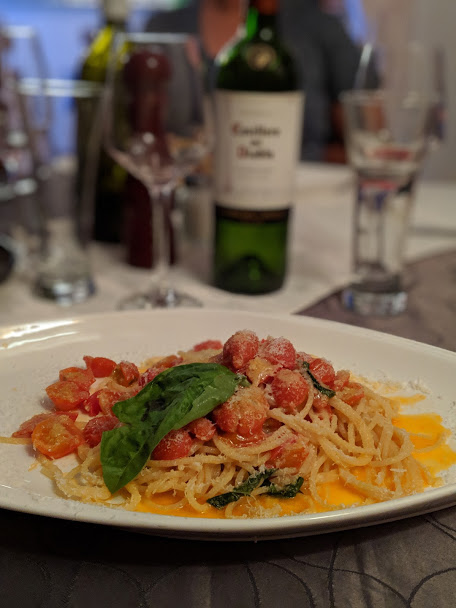
Spaghetti with tomato sauce at Amalfi
La Guarida: renowned for it’s amazing food and for its role in the movie “Fresa y Chocolate”
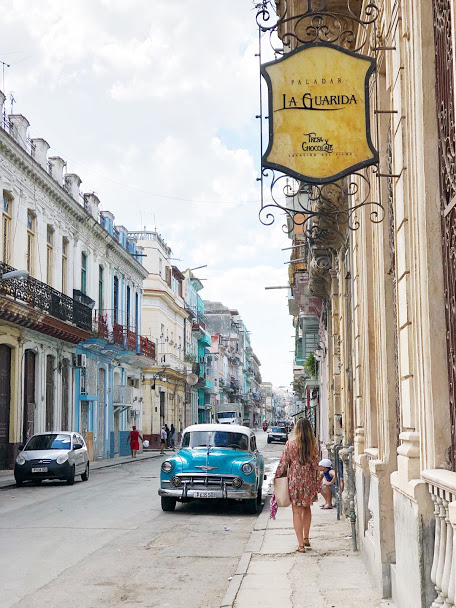
La Guarida in Old Havana
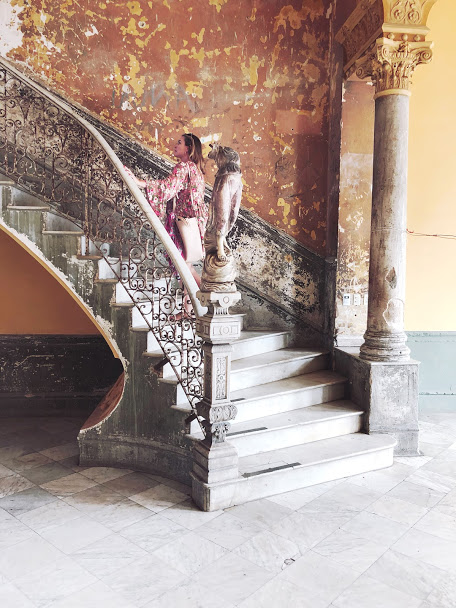
Going up the stairs to La Guarida
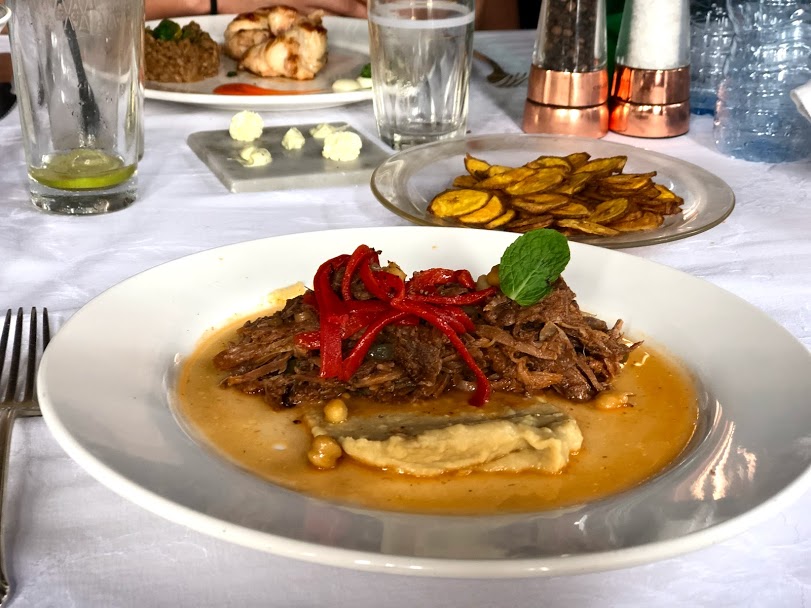
Ropa Vieja at La Guarida
Stay at a Casa Particular:
A Casa Particular is a villa/home/BnB that is privately owned and managed by the owner of the home. They too have permission from the Cuban government to operate in this fashion and they take great care to ensure that their guests enjoy their stay. We stayed at one and really enjoyed the experience. We had breakfast included daily, housekeeping, and even a security guard that patrolled the grounds from 7:30 pm until 7:30 am every day.
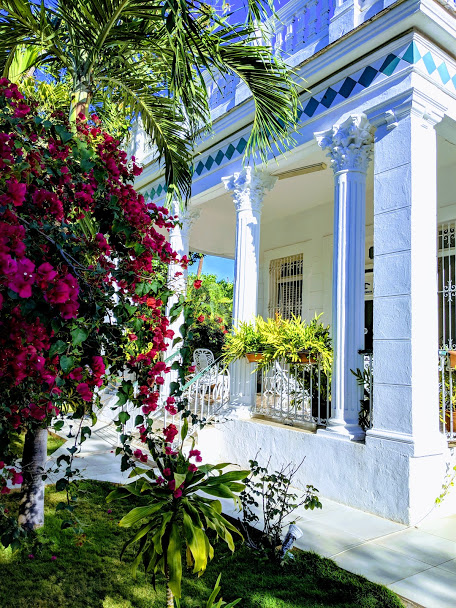
Exterior of our Casa Particular

Hallway inside our Casa
Visit the Fuster Gallery
José Fuster was inspired by Gaudí’s public works in Barcelona and wanted to do the same in his own homeland. After moving into a modest wooden house in a rundown neighborhood in 1975, Fuster set out to decorate his home/studio in colorful mosaic.
Once he finished there, he asked his neighbors if he could decorate their homes and businesses, and a few accepted his offer. Slowly his creations grew, and over the course of a decade, he transformed the neighborhood.
Jaimanitas was an economically depressed neighborhood before Fuster arrived, and now it serves to inspire other artists and art admirers.
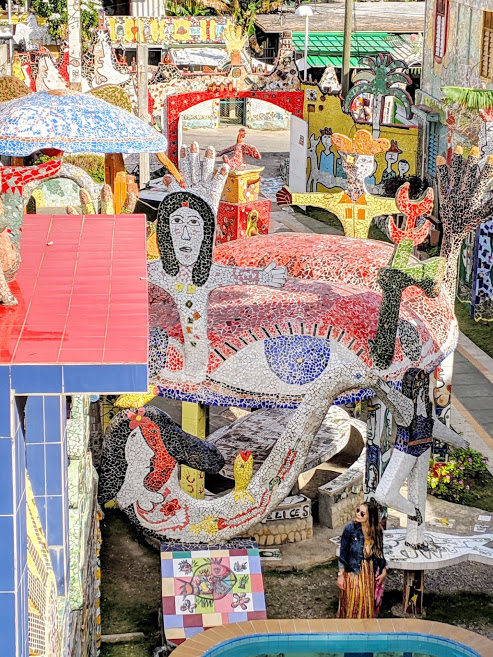
Fusterlandia
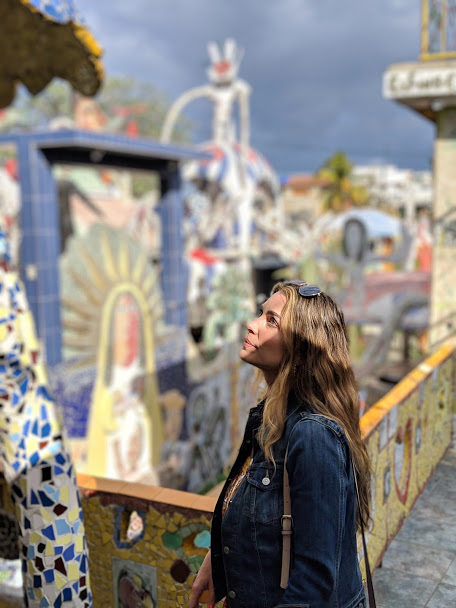
Visit the farm of an agricultural engineer
This was just one of the many private experiences we were able to have thanks to the licensed company we used to plan our trip. We visited the organic farm of an agricultural engineer-turned farmer, that has put into practice the organic and sustainable farming practices he used to teach. Now he has been able to help other local farmers and hire many people from outside Havana to help them improve their lives and teach better farming practices. He showed us around his farm, showed us his apiary, and invited us to a delicious lunch on the farm.
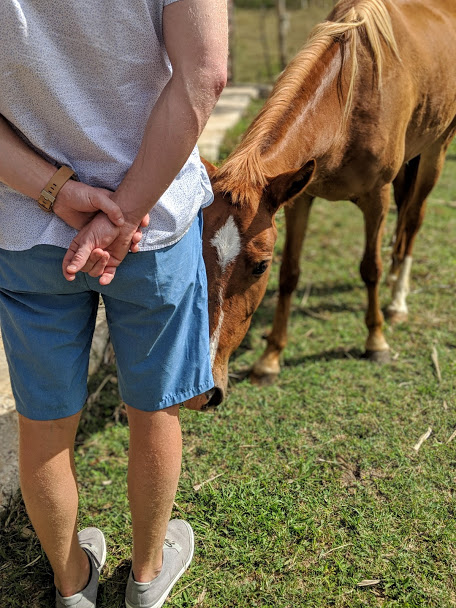
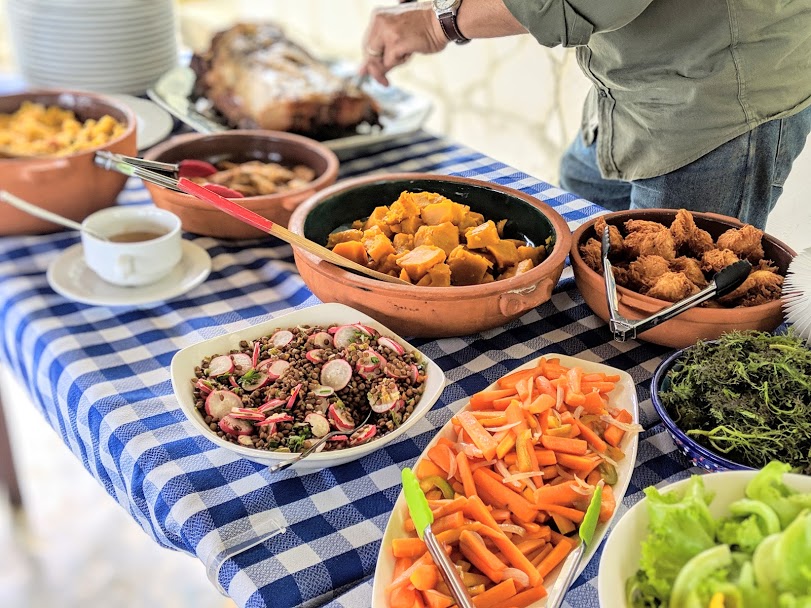
Organic lunch on the farm
Take a private salsa class
Thanks to our amazing guide, he helped set up a private salsa class at the home of one of the local salsa teachers. We learned the basic steps, and within an hour they had us dancing with a partner, following the steps that she would call out. It was an amazing experience and we got to see the home of one of the locals.
Learn how to make Cuban paella and Mojitos
Again–thanks to our amazing guide, he set up a class for us to learn how to make delicious and traditional mojitos as well as how to make Cuban paella at a paladar called La Fontana, another must when in Havana.
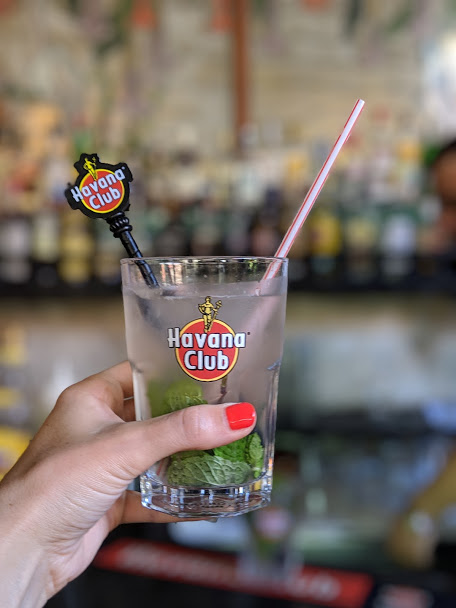
Mojito made by me
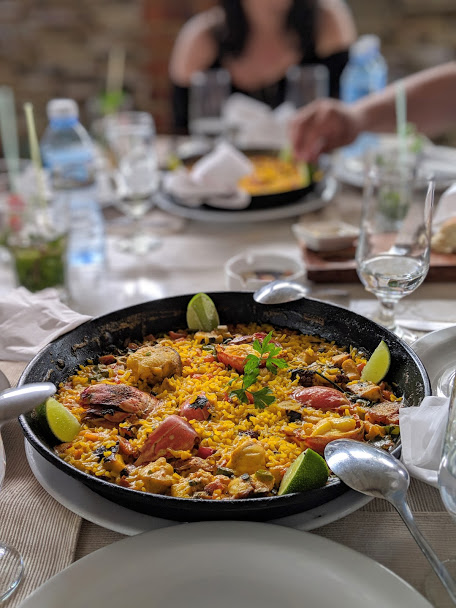
Cuban paella
Check out a mercado agropecuario (local produce market) and a local supermarket. Cuban supermarkets are different than what you might expect and you’ll get a better idea of what is, and what is not, available to everyday Cubans. The prices below (under precio) are in the traditional Cuban peso (not the tourist CUC) and the blackboard also gives you an idea of what each person is entitled to from a ration perspective each month from the Cuban government.
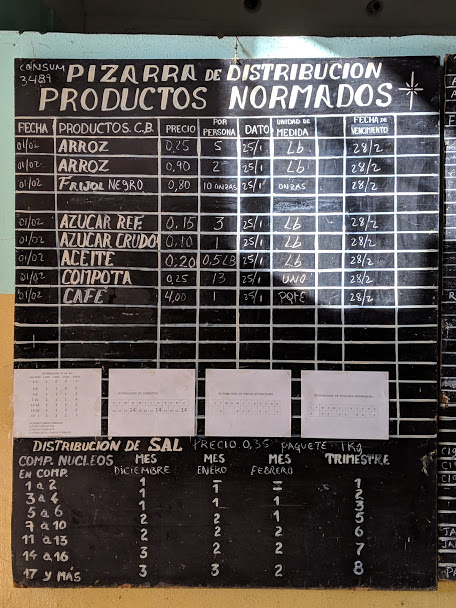
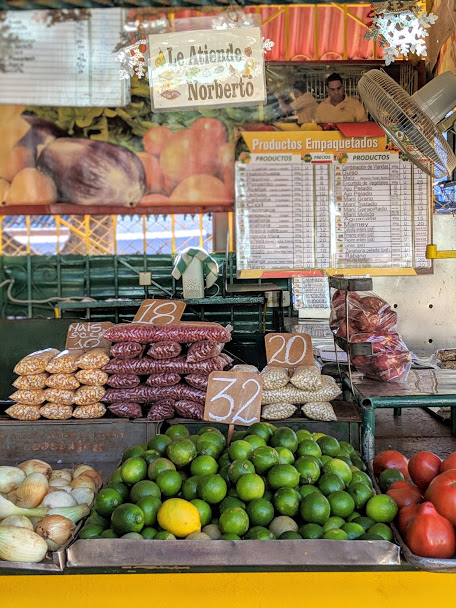
Happy Hour at a local’s home with Daiquiri class from a retired bartender from El Floridita.
The day before we left, our guide invited us into his home for a farewell happy hour and had a retired bartender from the world-famous El Floridita teach us how to make the traditional daiquiri (one of Hemingway’s favorites). They also had a fantastic Cuban food spread for us, and our guide and his wife were so sweet to surprise me with a birthday cake!
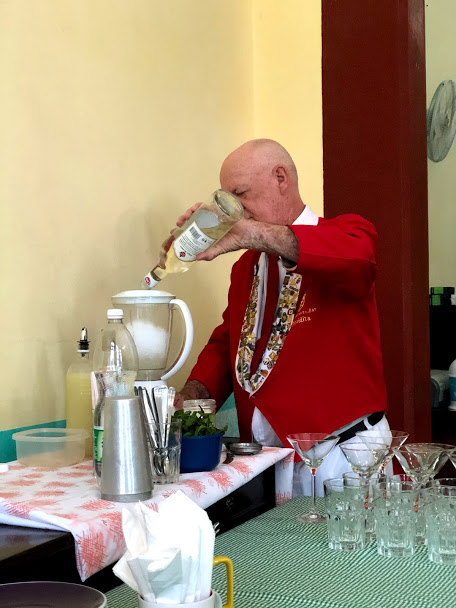
Retired bartender from El Floridita (he worked there 39 years!) showing us how to make daiquiris
Additional things to do in Havana
While these activities don’t necessarily “support the Cuban people” from the standpoint of money exchanging hands (i.e. these tend to be government-run tourist activities), they are part of the history and culture of Havana and help give you more insight into the country as a whole.
Catch a Buena Vista Club Show or Jazz Cafe in Vedado, or Cabaret show
Buena Vista Social Club is an ensemble of Cuban musicians that was brought together by World Circuit executive Nick Gold in 1996 to revive the music of pre-revolutionary Cuba. Although many of the O.G.s are now gone (like Celia Cruz for example), you can still enjoy the music from this iconic group at one of the many Buena Vista Social Club shows.
Explore Old Havana: Make sure to check out the four main squares:
- Plaza de la Catedral was named after the impressive 18th century Catedral de San Cristobal
- Plaza San Francisco de Asis which faces Havana’s harbor (where the cruise ships docs)
- Plaza de Armas. Make sure to check out the Museum of the City that recounts the history of how Cuba came to be once they gained independence from Spain.
- Plaza Vieja: it dates back to 1559, and most buildings have recently been restored to their former glory. They now house galleries, a coffee roastery, and cafes. There is a chocolate museum around here where you can enjoy a hot or cold chocolate drink, and around here you can also enjoy a delicious coconut ice cream from the ice cream street cart.

Visit Ernest Hemingway’s House Finca Vigia
Ernest Hemingway left his Havana home to his wife when he passed away, and she and the Cuban government came to an agreement where she would donate the home to the government so long as they didn’t then give the home away or use it for other purposes. The home is still an homage to Hemingway and although the property is in need of some repairs, you can still see Hemingway’s home as it was when he left it, clothes, books, and all.
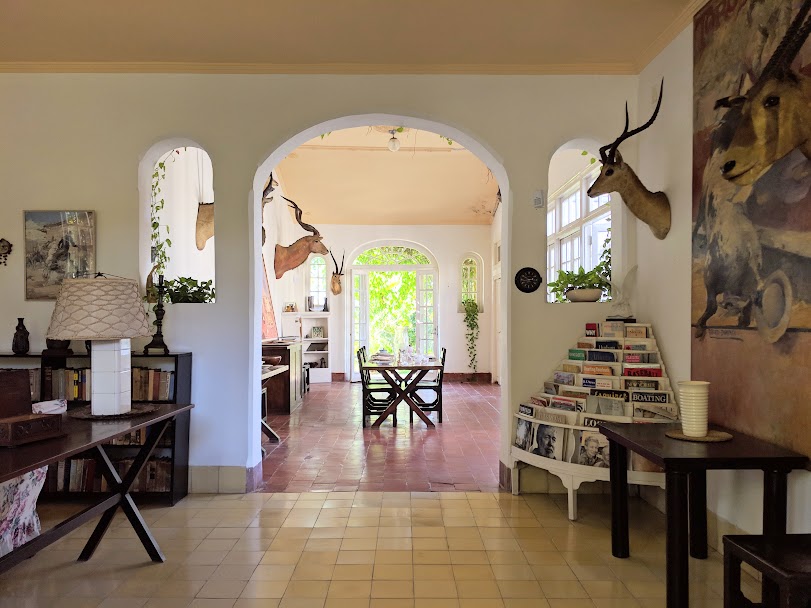
Hemingway’s home, Finca Vigia

Enjoy a Daiquiri at El Floridita
This place is a must, no matter how touristy it may be. It was the watering hold for Hemingway back in the day, and it’s worth popping in and enjoying a daiquiri and some fried plantains and soak it all in.
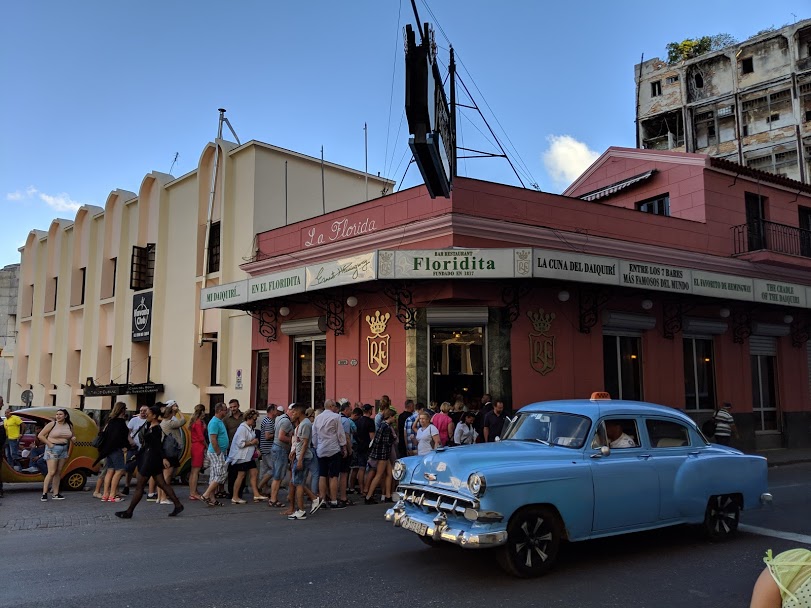

Hemingway greeting you at the bar

Refreshing daiquiri and fried plantains at El Floridita
FAQs and Tips on Traveling to Cuba
Health Insurance
Health Insurance is mandatory when traveling to Cuba and normally is included in the price of your airline ticket. Your boarding pass serves as proof of your insurance, so make sure to have it with you throughout your trip. It likely does not include coverage for pre-existing conditions. If you have a private guide, they’ll know where to take you in case you have an emergency and need to go to the hospital.

Safety & Security
I felt 100% safe the entire time I was there, even when we were not with our guide and in neighborhoods that would be deemed questionable if similar conditions were present in the US (due to the disrepair of the general infrastructure in Cuba). With that said, it’s always important to excercise caution just as you would in any city that you travel to. Don’t go out looking for things you shouldn’t be looking for, and don’t wander off to unknown areas, especially at night. Wear minimal jewelry and keep your valuable items (including cell phone) safely stored. Always keep a copy of your passport, airline tickets and credit card numbers separate from the originals.
As a general rule, do not drink tap water or use unfiltered ice in Cuba, even in hotels. Eating uncooked or unpeeled fruits and vegetables can also be a potential risk.
Fore more info on safety and security in Cuba you can check out www.travel.state.gov/content/passports/english/country/cuba.html
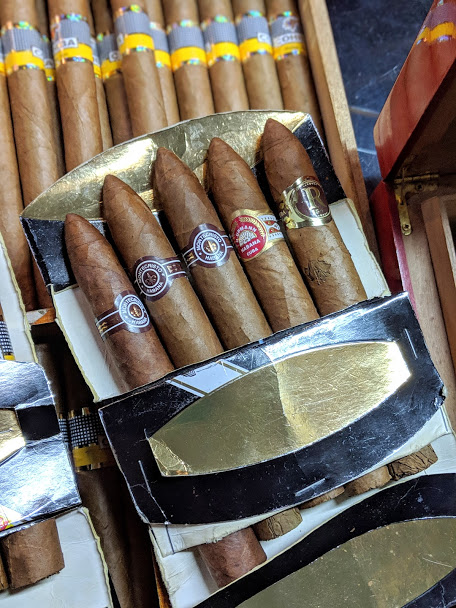

Passports & Visas
Travel to Cuba requires a valid passport (with a minimum of 6 months validity) and a visa. A travel visa is required for all US citizens. You will need to elect from one of 12 categories of travel to Cuba, with Support For The Cuban People being the most common. You will need the license number and address of the accommodations in Havana to complete the visa paperwork. Nearly all major airlines offer visas/tourist card for purchase at the airport. If you’d rather have the visa beforehand, you can check out cubavisaservices.com.

Currency
The tourist currency in Cuba is called the CUC (convertible peso). The value of the CUC is pegged to the US dollar, however if you exchange US dollars to CUCs you will lose 13% due to taxes and exchange fees. It’s advisable to either convert your US dollars to Canadian dollars or Euros prior to arriving in Cuba, and when you arrive to the Havana airport you can then exchange your currency to CUCs.
Although some American banks offer credit cards for use in Cuba, I wouldn’t count on it since credit card service is not widely used in Cuba and wifi can be spotty (for businesses using credit card machines operated by wifi). It’s therefore advisable to take as much cash as you think you will need for the entire trip. You should know before you travel whether you’ll have to pay for lodging in cash (in the case that you’re staying at a Casa Particular). With our trip we had breakfasts and lunches included in the price we paid, we were told to bring $500/person on the low end for a 5 day trip (for moderately priced dinners, drinks, and potential shows/taxis), and $1000/person on the high end if we were planning on buying cigars, rum, artwork, and dining at high end restaurants.
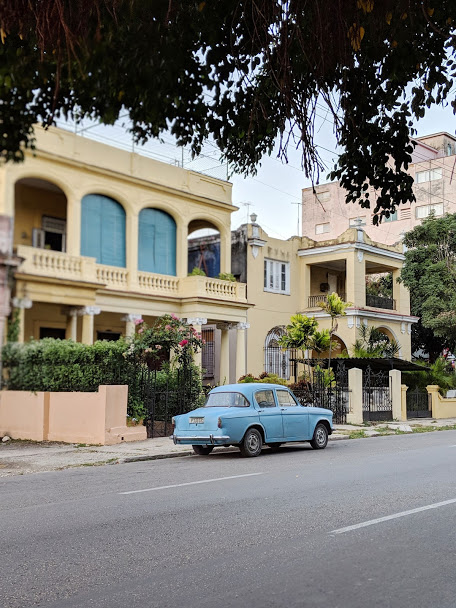
On average you can expect to pay $10-$20 per person for lunch, and $20-$30 per person for dinner. Cocktails were always reasonably priced at 5-8 CUCs per drink, and wine typically was 4.50-5 CUCs per glass.
There is typically long lines at the currency exchange counters, so I’d recommend exchanging as much money as you think you will need for the entire trip to avoid spending extra time in line.
Tipping
At restaurants, a 10% tip is appreciated. Sometimes gratuity is included in the bill (sometimes noted at the bottom of the menu), so be sure to check before tipping.
Most public restrooms are staffed and a tip of .25 CUCs are expected.
If you get a tour from a local guide, tipping them is an affirmation of a job well done. Tip amounts may vary, but a rule of thumb is to tip a guide 10 CUCs per guest per day, and 5 CUCs per guest per day for a driver.
You may run into some Cuban ladies dressed up in traditional tropical outfits holding baskets of fruit that will be excited to take a picture with you to remember your trip. Most street musicians or people you take photographs of also appreciate a tip—at that point you may ask before you take a picture of them if it’s ok and then at that point maybe negotiate what tip you’d like to give them. It is appropriate to give a small tip of 1 CUC.

Cell Phone coverage and Wifi
Internet access is not widely available and you’ll have to buy an internet card to be able to access the internet at a hotel or at a cafe. Even then the connection can be very spotty and at times not work really well.
Most major phone carriers have expanded cell service to Cuba, however many still don’t work in Cuba and can be costly. If you’re hoping to be able to use your phone while in Cuba, contact your cell provider beforehand to understand what sort of service you may expect. I have T-Mobile and they charge $15/MB + tax, talk at $2/minute, and $.50/text.
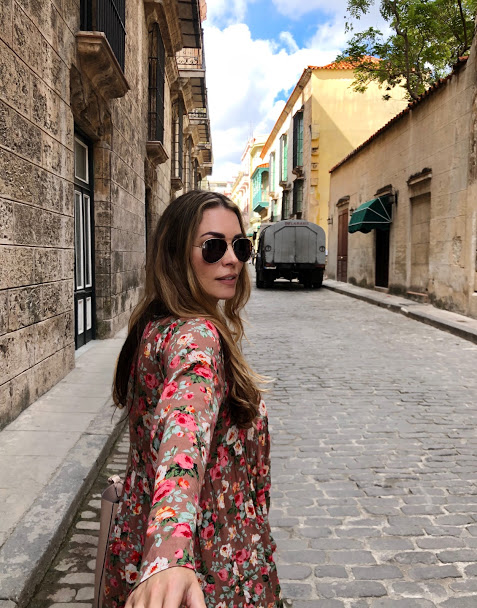
Best time of year to visit
As we all know Cuba is a caribbean country, so going in the winter time (for the northern hemisphere) is best. We went in February and couldn’t stop commenting on how amazing the weather was—not humid, a nice breeze on a daily basis, and little to no rain. The rainy season for Cuba is May-October (also hurricane season) and their dry season is November through April.


The famous Hotel Nacional
Additional things to consider
Due to the US embargo and Cuban government restrictions, many things are not readily available. Make sure to pack extra toiletries such as shampoo and soap (especially in Casa Particulares), hand sanitizer, hair dryers, sunscreen, bug repellent, over the counter drugs like anti-histamines, aspirin, bandaids, Imodium or anti-diarrhea medicine.
If you’re considering additional gifts for the Cuban people you can bring gum, pens, travel toiletries (we left our additional stuff at the casa and the ladies were thrilled), batteries, or even un-opened over the counter medications like tylenol, advil, and antacids.

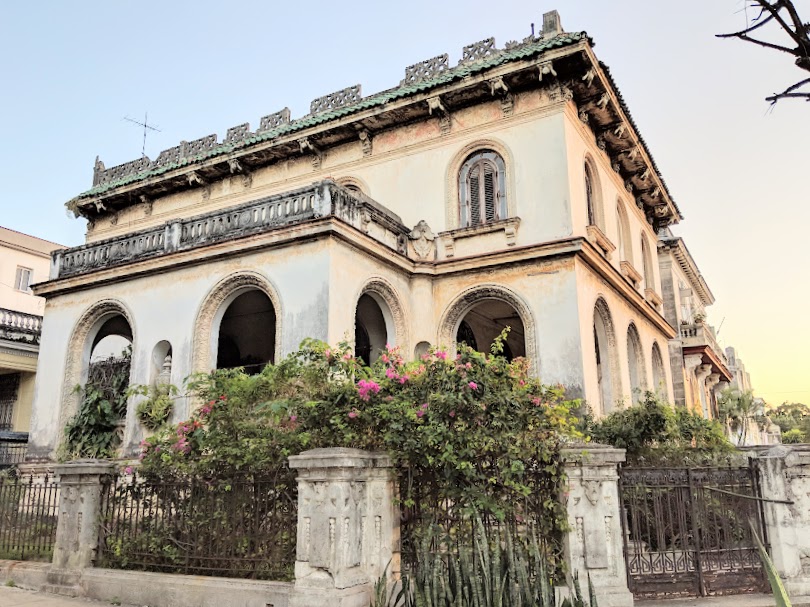
If you’re thinking about planning a trip to Cuba and want to discuss what you can see and do in Havana and in the surrounding area, feel free to reach out to me at ane@strongtravel.com. I am more than happy to go into more detail about my trip, suggest guides, drivers, and where to stay, and even help put together the entire trip as well so it’s all taken care of for you and in compliance with US law.
Click here to check out my video highlighting the trip to Havana via IG TV.
Cuba is an adventurous destination where things do not always go as planned. When traveling to Cuba, it’s important to bring a flexible attitude, an open mind and a sense of humor.

